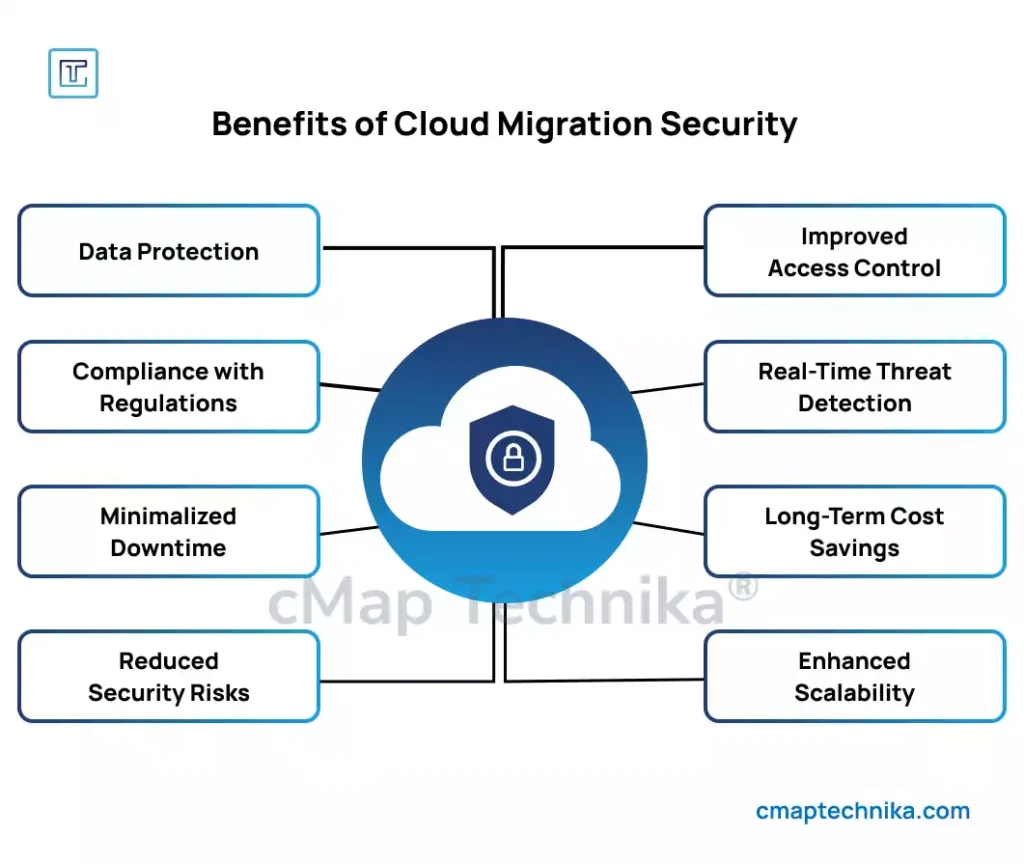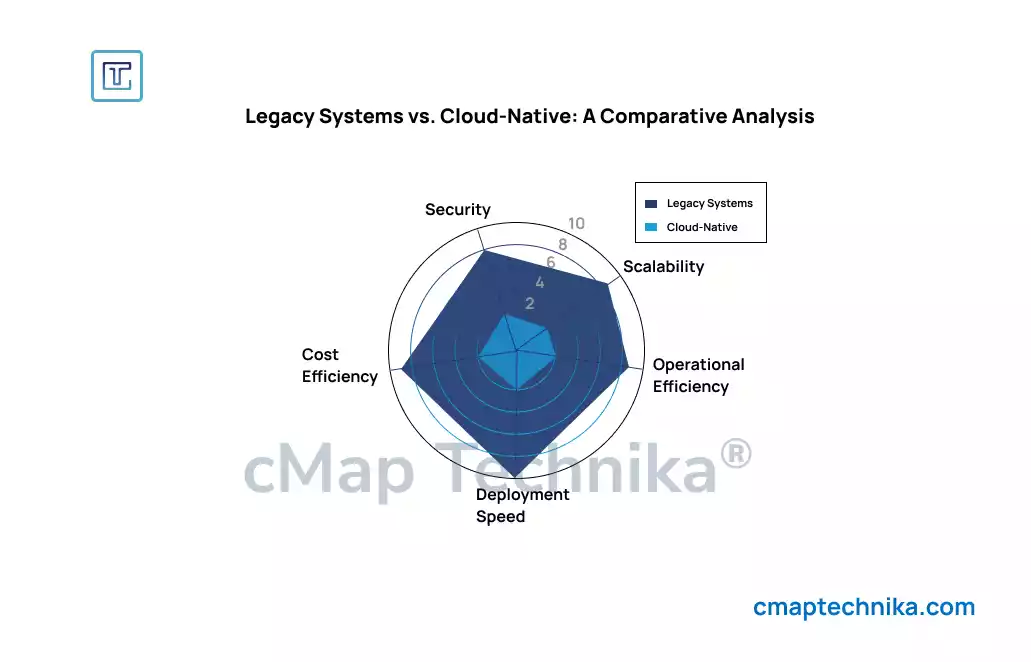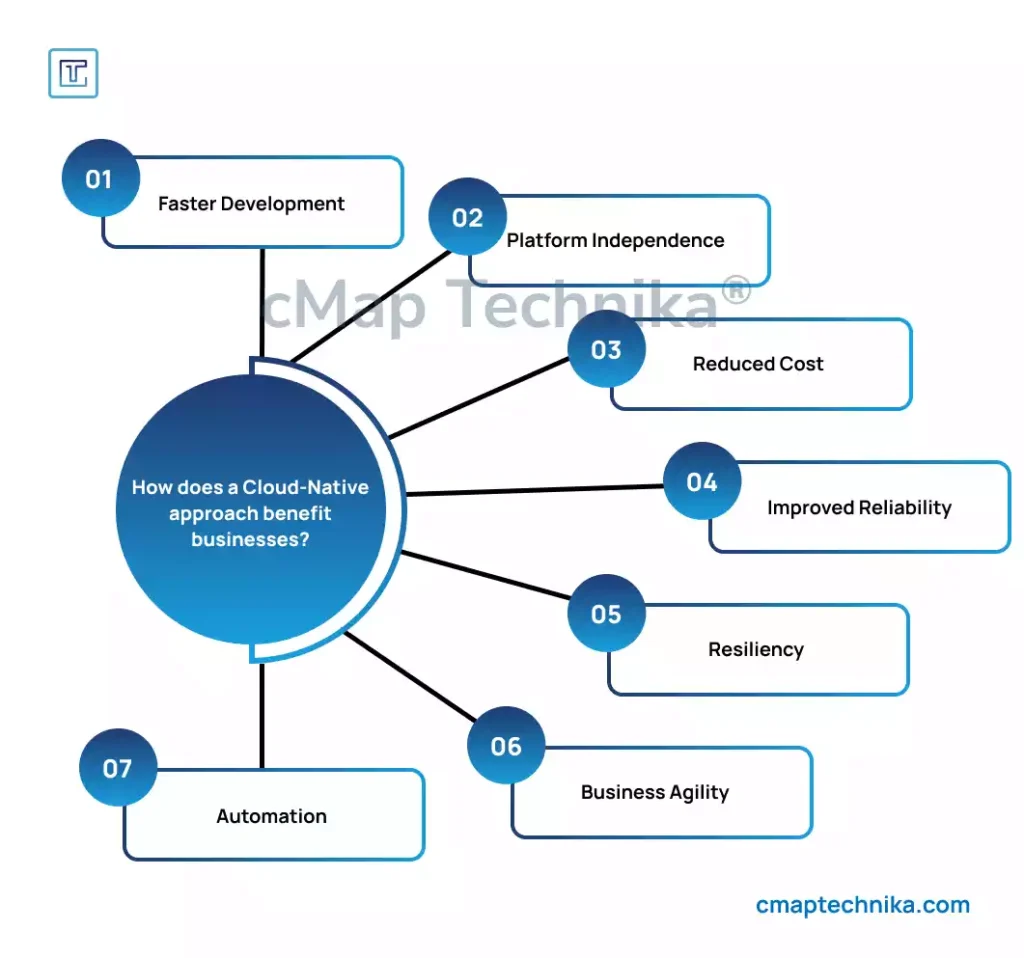Introduction
Legacy IT systems—often built on monolithic architectures, on-premise data centers, and rigid infrastructures—pose significant barriers to agility, scalability, and innovation. These outdated systems struggle to support modern business demands, such as real-time data processing, seamless scalability, and rapid software deployment. As organizations strive to remain competitive in an increasingly digital landscape, migrating to cloud-native architectures has become a strategic necessity rather than an option.
Cloud-native environments leverage microservices, containerization, serverless computing, and automation to enhance scalability, resilience, and cost-efficiency. However, transitioning from legacy systems presents a set of challenges, including:
- Complex Data Migration – Ensuring seamless and secure data transfer while maintaining integrity and minimal downtime.
- Security & Compliance Risks – Adapting to new security models and meeting regulatory requirements in a cloud-first ecosystem.
- Cultural & Operational Resistance – Shifting mindsets, upskilling teams, and restructuring workflows to align with cloud-native best practices.
- Technical Debt & System Compatibility – Managing legacy dependencies and re-architecting applications for cloud optimization.
This white paper provides an in-depth roadmap for organizations planning their legacy-to-cloud transformation, covering strategic considerations, implementation frameworks, best practices, and real-world case studies. By following a structured approach, enterprises can mitigate risks, optimize cloud investments, and unlock the full potential of cloud-native technologies to drive digital transformation.
1. Understanding the Limitations of Legacy Systems
1.1 Challenges of Legacy Infrastructure
- Operational Inefficiencies: Older systems require costly maintenance and have high downtime rates.
- Scalability Constraints: Legacy architectures are not designed to handle modern workloads and spikes in demand.
- Security Vulnerabilities: Outdated security protocols expose enterprises to cyber threats.
- Integration Issues: Legacy systems struggle to integrate with modern applications and APIs.
1.2 Business Impact of Legacy Systems
- Reduced ability to adapt to market changes.
- Increased operational and compliance costs.
- Delayed product development and innovation cycles.
2. Cloud-Native Architecture: The Future of Enterprise IT

2.1 What is Cloud-Native Architecture?
Cloud-native architecture leverages containers, microservices, serverless computing, and DevOps methodologies to create scalable and resilient applications. Key benefits include:
- Elastic Scalability: Auto-scaling capabilities optimize performance.
- Resilience: Distributed architecture minimizes single points of failure.
- Faster Time-to-Market: DevOps and CI/CD pipelines enable rapid deployments.
2.2 Comparing Legacy vs. Cloud-Native

| Feature | Legacy Systems | Cloud-Native Architecture |
| Deployment | On-premise | Cloud-based (AWS, Azure, GCP) |
| Scalability | Limited & expensive | Auto-scalable & cost-efficient |
| Security | Static & vulnerable | Dynamic & proactive |
| Development Speed | Slow, waterfall approach | Agile, DevOps-driven |
3. Strategic Roadmap for Transition

3.1 Assessing Readiness for Cloud Migration
A successful transition starts with assessing the current IT landscape. Key steps:
- Inventory Assessment: Identify and categorize applications based on criticality and compatibility.
- Technical Debt Analysis: Determine modernization complexity and feasibility.
- Compliance & Risk Evaluation: Ensure industry regulations and data protection are addressed.
3.2 Choosing a Migration Strategy
There are multiple approaches to migration, depending on business needs:
- Rehosting (Lift-and-Shift): Moving applications to the cloud with minimal modifications.
- Replatforming: Making slight modifications to optimize cloud efficiency.
- Refactoring (Re-architecting): Completely transforming applications into cloud-native models.
- Replacing: Phasing out legacy applications and adopting cloud-based SaaS alternatives.
3.3 Selecting the Right Cloud Service Model
Organizations must choose between different cloud models:
- Infrastructure-as-a-Service (IaaS): Virtualized computing resources (e.g., AWS EC2, Azure VMs).
- Platform-as-a-Service (PaaS): Development platforms with built-in infrastructure (e.g., Google App Engine, AWS Lambda).
- Software-as-a-Service (SaaS): Fully managed software solutions (e.g., Salesforce, Microsoft 365).
4. Best Practices for a Seamless Transition
4.1 Implementing DevOps & CI/CD Pipelines
DevOps culture accelerates deployment cycles by integrating development and operations. CI/CD pipelines automate:
- Code integration and testing
- Continuous deployment and monitoring
- Rollbacks in case of failures
4.2 Security and Compliance Considerations
Cloud environments introduce new security risks, requiring a Zero Trust security model, encryption, and compliance with frameworks like GDPR, HIPAA, and ISO 27001.
4.3 Change Management and Training
Transitioning to cloud-native requires:
- Employee Training: Upskilling teams on cloud platforms, DevOps, and security.
- Stakeholder Buy-in: Ensuring leadership and operational teams align on strategy.
- Gradual Rollout: Implementing phased deployments to mitigate risks.
5. Case Studies: Lessons from Successful Cloud Transitions
Examining real-world cloud migration success stories offers valuable insights into best practices, challenges, and transformative outcomes. The following case studies highlight how industry leaders successfully transitioned to cloud-native architectures, demonstrating the impact on scalability, security, and innovation.
5.1 Netflix: Scaling Innovation with Microservices
Challenge:
As Netflix expanded globally, its traditional monolithic architecture struggled to handle the increasing demand for seamless, high-quality video streaming. The system faced issues with scalability, frequent service outages, and deployment bottlenecks, limiting the company’s ability to deliver a reliable user experience.
Solution:
Netflix migrated from its monolithic architecture to a fully cloud-native, microservices-based system on Amazon Web Services (AWS). Key strategic moves included:
- Microservices Adoption – Breaking down the monolithic application into independently deployable services allowed for greater flexibility and faster development cycles.
- Global Content Delivery Network (CDN) Optimization – Leveraging AWS’s distributed infrastructure ensured low-latency streaming across different regions.
- Chaos Engineering for Reliability – Netflix introduced “Chaos Monkey,” a tool that randomly shuts down instances in production to test system resilience and prevent failures.
- Automated Scaling & Self-Healing Infrastructure – By utilizing auto-scaling and container orchestration tools like Kubernetes, Netflix optimized resource utilization while reducing downtime.
Outcome:
- Achieved 99.99% uptime, ensuring seamless content streaming to over 230 million subscribers.
- Enabled continuous deployment, rolling out thousands of updates per day without service disruptions.
- Improved scalability, handling peak traffic surges without impacting user experience.
Netflix’s transition showcases how microservices, automation, and resilience testing can drive superior performance and innovation in cloud-native environments.
5.2 Capital One: Security-First Cloud Migration
Challenge:
As a leading financial institution, Capital One needed to modernize its banking infrastructure to improve security, enhance customer experience, and support digital banking innovations. The traditional on-premise data centers were costly, complex to maintain, and presented security risks in an evolving cyber threat landscape.
Solution:
Capital One undertook a full-scale migration to Amazon Web Services (AWS), becoming one of the first major banks to go all-in on the cloud. The transition was driven by a security-first approach, implementing the following key strategies:
- Zero-Trust Security Model – Adopted identity-based access controls (IAM) and multi-factor authentication (MFA) to prevent unauthorized access.
- AI-Driven Fraud Detection – Leveraged machine learning algorithms to analyze transaction patterns in real-time, significantly reducing fraudulent activity.
- API-Driven Banking Services – Shifted from traditional banking models to API-driven platforms, allowing seamless integration with third-party financial services and fintech startups.
- Automated Compliance & Data Encryption – Ensured end-to-end encryption of sensitive financial data and implemented automated compliance monitoring to meet regulatory requirements (e.g., GDPR, PCI DSS).
- Serverless Computing for Efficiency – Utilized AWS Lambda to reduce infrastructure costs and optimize real-time transaction processing.
Outcome:
- Reduced IT operational costs by 40%, reallocating resources to innovation and customer experience enhancements.
- Increased cybersecurity resilience, proactively identifying and mitigating threats in real time.
- Launched Capital One’s digital banking platform, offering AI-driven customer insights and personalized financial recommendations.
Capital One’s cloud transformation underscores the importance of prioritizing security, regulatory compliance, and AI-driven analytics in cloud-native financial services.
Key Takeaways from Successful Cloud Transitions
- Embrace Microservices for Scalability – Breaking down monolithic architectures accelerates innovation and enables seamless scaling.
- Prioritize Security from the Start – Implement zero-trust models, encryption, and AI-driven monitoring to enhance data protection.
- Leverage Automation & AI – Using machine learning and automation streamlines operations and improves decision-making.
- Optimize Costs with Serverless & Auto-Scaling – Efficient resource allocation reduces cloud expenditures and maximizes performance.
By learning from Netflix and Capital One, enterprises across industries can navigate their cloud transitions effectively, ensuring enhanced security, scalability, and long-term success.
Conclusion: The Future of Cloud-Native Enterprises
Modernizing legacy systems is no longer just an IT initiative—it’s a strategic imperative for businesses aiming to stay competitive in an era of rapid technological advancement. The transition to cloud-native architectures unlocks significant benefits, including:
- Unparalleled Scalability and Innovation – Organizations can rapidly scale resources on demand while leveraging cutting-edge technologies like AI, machine learning, and real-time analytics.
- Enhanced Security and Compliance – Cloud providers continuously evolve their security frameworks, offering built-in encryption, automated compliance monitoring, and proactive threat mitigation.
- Operational Efficiency and Cost Optimization – By eliminating costly on-premise infrastructure and adopting pay-as-you-go models, companies can significantly reduce overhead while optimizing IT resource allocation.
- Agility and Future-Proofing – Cloud-native enterprises can swiftly adapt to market changes, integrate new technologies, and deploy applications faster, fostering continuous innovation.
Businesses that embrace cloud-native architectures today are not just modernizing their systems—they are future-proofing their operations, driving digital transformation, and ensuring sustained growth in an increasingly dynamic market. The time to act is now.






